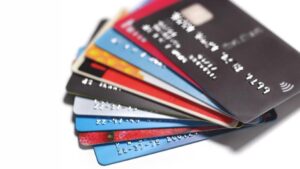Getting a credit card with a low FICO score these days may seem a tall order, but it’s not that difficult—assuming you apply the right steps.
The thing is, credit card issuers consider bad-credit applications with extreme caution, as they know the default risk is high. So the question to you is: Assuming you have poor credit, what assurances are you willing to give credit card issuers that you’ll keep your part of the bargain and make—at least—the minimum payment due?
That’s the big question you must answer!
Luckily for you, this article walks you through the process it takes to get a credit card with a less-than-stellar FICO score. To get a credit card with poor credit:
- Understand What Poor Credit Is
- Familiarize Yourself With Secured and Unsecured Credit Cards
- Decide Why You Need A Credit Card
- Check Your Credit Score And Improve Accordingly
- Shop For Credit Cards Designed For Poor Credit
- Gather Your Paperwork
- Decide Whether You Want an Unsecured or Secured Credit Card
- Apply
Let’s dig in deeper!
1. Understand What Poor Credit Is
To get a credit card with poor credit, understand what poor credit is. Poor credit is a FICO score that falls between 300 and 850 for most scoring models. Fico scores of 630-689 are considered fair credit scores, while FICO scores below 630 are considered poor credit.
Understand what poor credit is so you can zero in on the credit cards you’re eligible for.
2. Familiarize Yourself With Secured and Unsecured Credit Cards
To get a credit card with poor credit, familiarize yourself with secured and unsecured cards. This will help you understand what card option is best for you. Understand the basic difference between secured and unsecured credit cards.
Secured cards require collateral such as landed property or monetary deposit while Unsecured cards do not. Unsecured cards offer lower interest and higher credit limits while secured cards help individuals with poor credit boost their credit scores.
3. Decide Why You Need A Credit Card
To get a credit card with poor credit, decide why you need a credit card. Your reason for a credit card determines what card you can apply for with poor credit. To decide quickly, answer the following questions:
Do You Want To Earn Rewards?
Earning rewards involves cash back, miles, or points on any purchase you make on groceries, gas, entertainment, restaurants, and travel. If a reward program is your reason for a credit card with poor credit, then you can consider a flat-rate cash-back card.
Do You Want To Make A Large Purchase?
Most credit cards do not offer interest on new purchases for a while. If you need a credit card to make a large purchase consider cards with good APR such as The Chase Freedom Unlimited, which offers 16.50% – 25.2% variable APR after your first 15 months of account opening.
Do You Want To Travel Abroad?
Most cards often charge a 3% fee on purchases made outside the U.S. If you’re looking to get a credit card for traveling abroad, consider a credit card with no foreign transaction fee or TSA PreCheck application fee, such as The Capital One Venture Reward Credit Card.
4. Check Your Credit Score And Improve Accordingly
To get a credit card with poor credit, check your credit score and improve accordingly. Most card issuers are particular when it comes to the credit score requirement needed to obtain certain cards. If your credit score is not up to par, improve it so you can boost your credit card approval odds.
Here are a few steps you can take to improve your credit score:
- Review your credit score often
- Pay revolving debts on time
- Keep your debt-to-income ratio low
- Use secured cards
- Keep your credit utilization low
- Pay your bills on time
5. Shop For Credit Cards Designed For Poor Credit
To apply for a credit card with poor credit, shop for credit cards designed for sub-579 FICO scores. There are two major categories of credit cards available for people with poor credit scores. They include:
- Secured credit cards
- Subprime credit cards
Secured Credit Card
This card is for starters and small business owners with poor credit, who have little or no credit history.
You begin by opening a secured account and making a refundable security deposit into it. This deposit also limits your credit card. Many credit cards have a minimum of $200 security deposit—meaning you can’t deposit less, but you can make more deposits if you want a higher limit.
Secured cards work like every other credit card, some even offer rewards, and a few have no annual fee like Well Fargo. Examples of secured credit cards you can obtain include:
- Capital one platinum secured credit card
- Discover it secured credit card
- OpenSky Secured Visa Credit Card
Subprime Credit Card
This is an unsecured card made available to those with poor credit cards and could be a good option if you don’t want to tie your fund with a security deposit.
Carefully read the terms and conditions before you apply. Some subprime cards have an annual fee of $59. You may likely receive a low credit limit which may increase over time if you intentionally put your card to work.
Subprime cards have no foreign transaction fees and are not available to those living in Vermont, Colorado, Iowa, Nevada, West Virginia, and Hawaii.
Examples of Subprime credit cards include:
- Surge Mastercard
- Total Visa Card
6. Gather Relevant Paperwork
To apply for a credit card with poor credit, gather relevant paperwork. Your issuer will request proof of identification before approving your card. Once you’re settled on what card best suits your needs, gather the relevant paperwork needed to apply.
You’ll need to provide your:
- Name
- Address
- Date of birth
- Social security number
- Employment status and proof of income
7. Decide Whether You Want an Unsecured or Secured Credit Card
To apply for a credit card with poor credit, decide whether you want an unsecured or secured credit card. Once you familiarize yourself with secured and unsecured credit, decide why you need the credit card you seek. This will help you choose the credit card that’s best for you.
8. Apply
To apply for a credit card with poor credit, apply. Once you find the credit card that best suits your needs and have gathered relevant paperwork, apply. You can apply through any of the below means:
- In-person: Fill out your application form and submit it in person. Remember to have your paperwork attached to your application form while submitting
- Online: Go to your issuer’s site, fill out the form, and upland your paperwork
- Through a call: Place a call across to your issuer and follow the process
- E-mail: Send your issuer a mail including relevant information such as your name, address, SSN, and employment status
Note that the application process for credit cards is similar among card issuers. Once you submit your application, you’ll receive feedback in a short while—one minute or more.
Conclusion
To apply for a credit card with poor credit, understand what poor credit is. Next, decide why you need a credit card. Your reason for a credit card determines what card you apply for. Check your credit score and improve accordingly.
Next, shop for credit cards designed for poor credit. Gather your paperwork and apply. With this process, rest assured that you will get your credit card approved in no time.








No Comment! Be the first one.